JANUARY

<Kiyomizu Temple> The main deity of Zuigu Hall, the seated statue of Dai-guizubosatsu (Great Involuntary Bodhisattva), will be specially opened to the public. It is a hidden Buddha statue that ‘grants every wish (request) of sentient beings’ and was opened to the public in 2018 for the first time in 222 years, and there has been no opportunity for it to be opened in recent years. Under the Zuigu Hall, visitors can make the ‘Tainai Tour’, which is a tour of the Great Zuigu Bodhisattva’s womb in the darkness, using prayer beads as a guide.
Date : January 10(Fri.) – March 18(Tue.), 2025
NOVEMBER
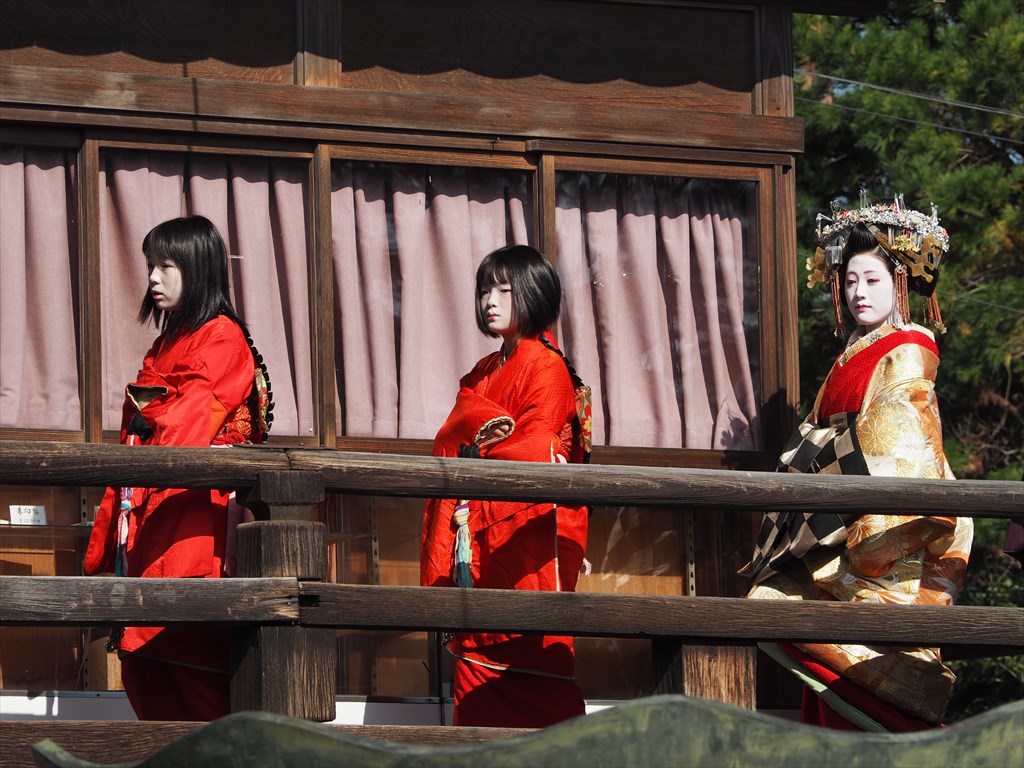
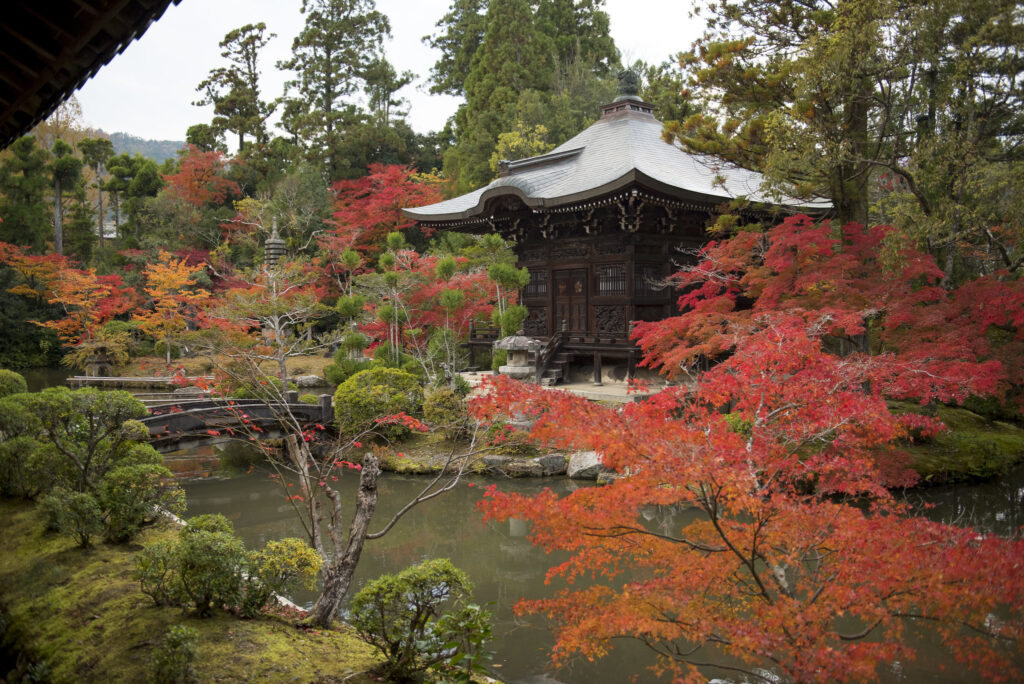
<Yugiri Festival> In the early Edo period, Yugiri_tayu was a famous geisha from Osaka Shinmachi who gained a reputation for her talent and colour. Tayu is the status given to a prostitute of the highest rank who was both beautiful and cultured. She passed away at 27 years old and was said to have been born in Sagano, where a cemetery was built on the north side of Seiryo-ji Temple in Kyoto. At the Yugiri Festival, a memorial service is held in the main hall, followed by elegant dances and a lustrous procession by the Shimabara tayu on Saturday, November 9 in Seiryo-ji Temple.
OCTOBER
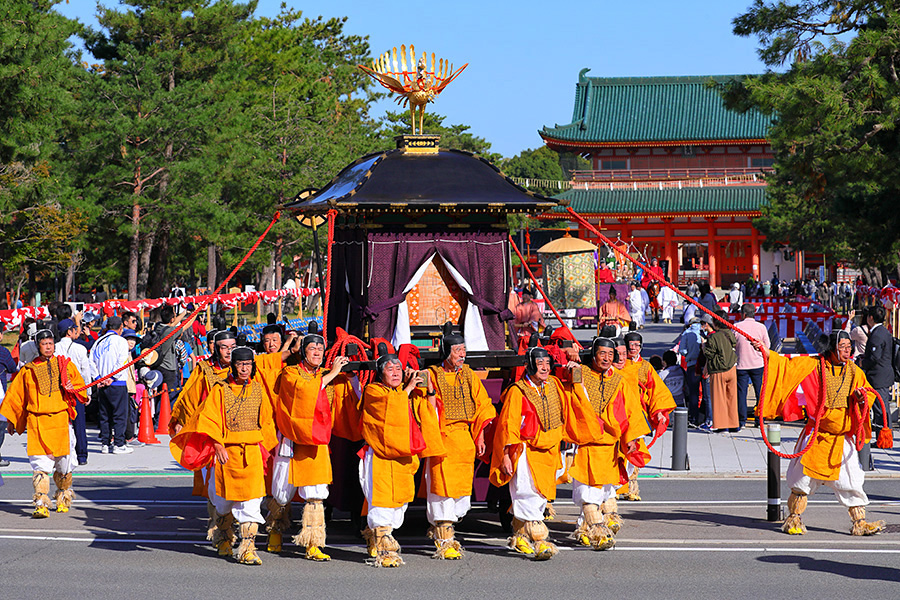
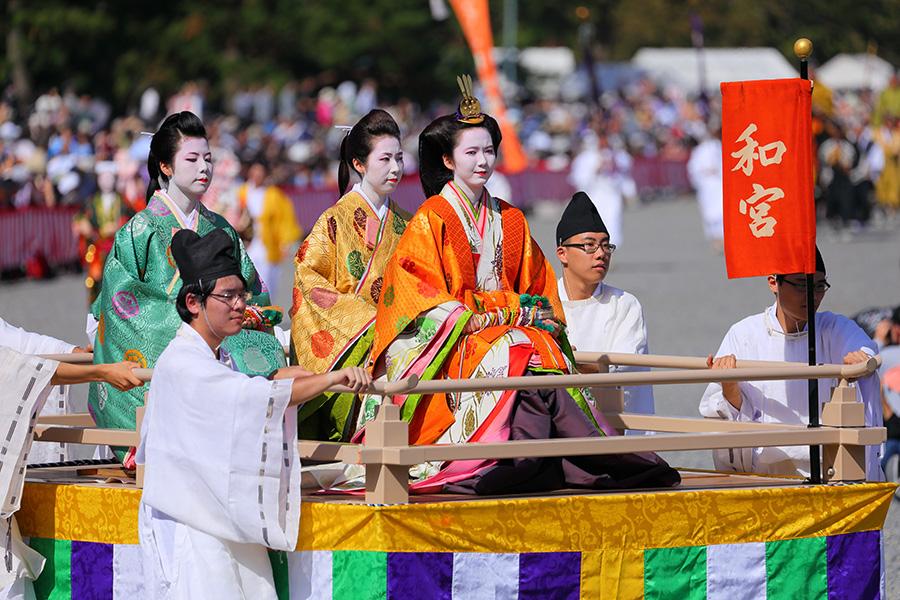
The Jidai Matsuri, or the , Festival of the Ages, is one of the big three festivals of Kyoto and is held on October 22nd every year. Just like the other two big festivals (Aoi Festival and Gion Festival), it has parade with people in the costumes from the Heian period to the Meiji period. The procession lasts nearly two hours.
SEPTEMBER
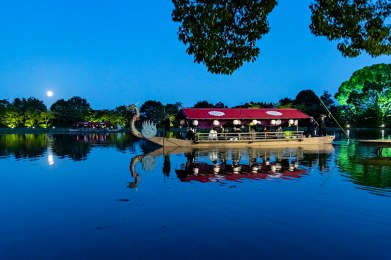
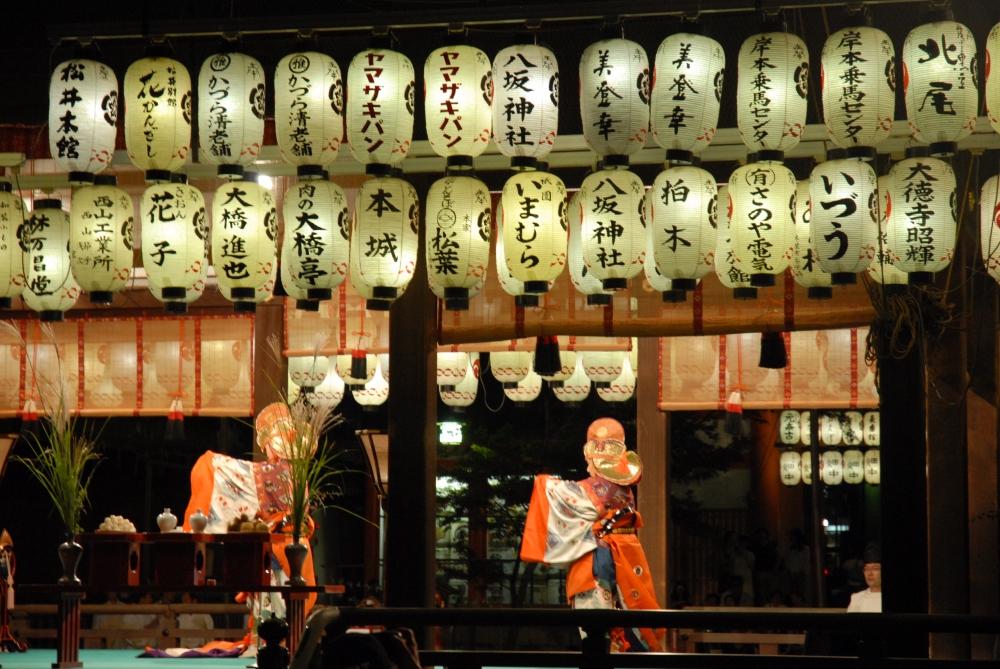
Kangetsukai Moon-Viewing is an event associated with the Japanese custom of appreciating the moon on the nights of the full moon in September. This event is held to pray for a good harvest and happiness.
At Daikakuji Temple in Arashiyama (Left photo), visitors can enjoy moon viewing on a Ryutousen (dragon boat) or Gekishuisen (a boat) floating on Osawa Pond, which is said to be one of the three best places to view the moon.
AUGUST
Kyoto Gozan Okuribi
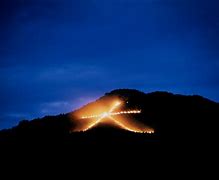
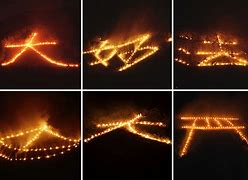
The “Gozan Okuribi” (Gozan bonfires), also known as “Daimonji Yake” or “Daimonji no Okuribi” light up the summer night sky in Kyoto. This traditional cultural event is considered one of the four major festivals in Kyoto, along with the Aoi Matsuri, Gion Matsuri, and Jidai Matsuri. It is an important ceremony to send off the spirits of ancestors called “Shourai (spirits of the dead)” who were welcomed during the Obon period to the afterlife.
Date: Friday, August 16, 2024 (basically rain or shine)
<Lighting time for each mountain bonfire>
Daimonji 8:00pm Myouho 8:05pm Funagata 20:10pm Hidaridaimonji 20:15 Toriigata 20:20
JULY
Gion Matsuri
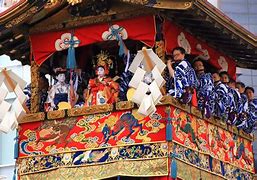
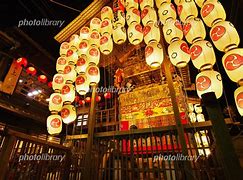
Gion Matsuri is a one of the biggest festivals in Kyoto and it takes place over the entire month of July. Yamahoko are decorated floats that every neighbourhood in Kyoto builds. They are decked with local arts and crafts that’s why some call them walking museums. There are a total of 35 floats: 23 for the Mae-matsuri, 11 for the Gosai-matsuri, and 1 for the Resting Yamahoko. Conducted throughout the month of July, it reaches its high point on the 17th with a parade of floats, some of which carry groups of musicians.
Tanabata Festival
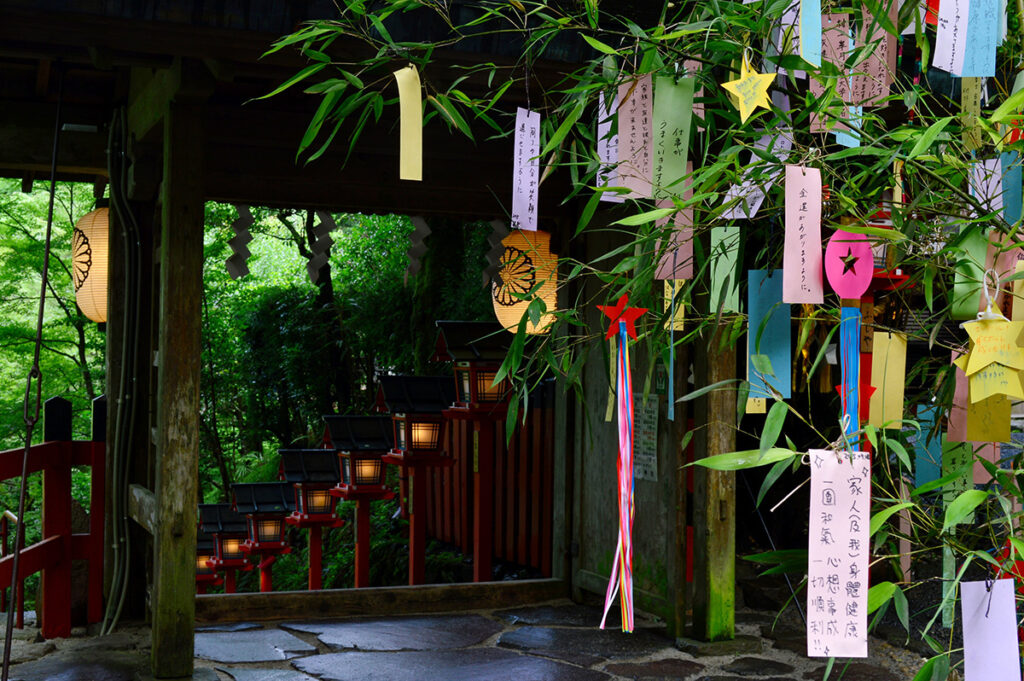
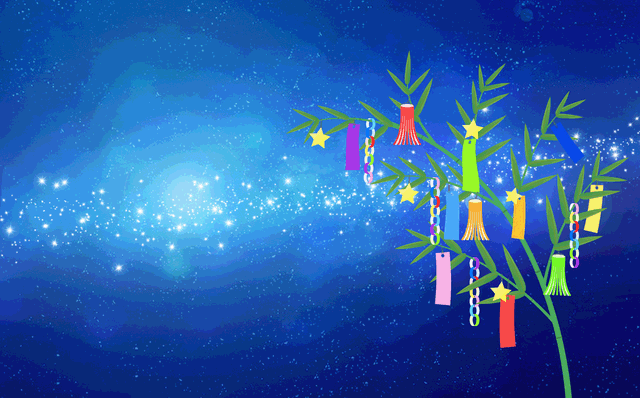
Tanabata is an annual event that is celebrated on July 7th in Japan.Although, in some areas, it is celebrated in August according to the Japanese lunar calendar. Tanabata festival is based on the old Chinese folktale, about a couple of lovers in the sky, Orihime and Hikoboshi. They fell in love with each other and married, but after they got married, they started neglecting their work, so the Sky King separated them and didn’t allow them to see each other. Now, they are only allowed to meet on July 7th, so on that day, we have a celebration dedicated to the meeting of Orihime and Hikoboshi. It is a very nice event where a wide range of people, from children to adults, make wishes on strips of paper.
JUNE
Nagoshi-no-harai
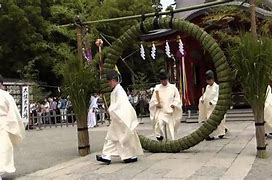
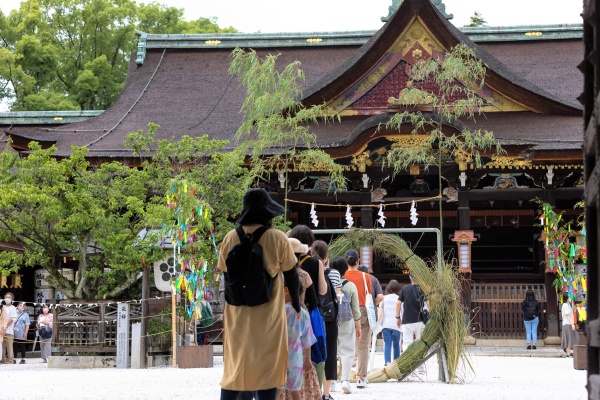
Natsukoshi-no-harai is a Shinto ritual held on June 30, halfway through the year, to purify the body of impurities that have accumulated over the past six months and to pray for good health for the remaining six months of the year.A thatched ring larger than a person’s height is set up at the shrine, and visitors walk through it to ward off bad luck. This is based on a story that Susanoo-no-Mikoto, who asked for a place to stay on his journey, was treated warmly by Sominshorai even though he was poor, and later, as Susanoo-no-Mikoto said, he escaped the plague by wearing a thatched ring on his waist.